
We are celebrating 15 years — and counting — of stories that are deeply researched and deeply felt, that build a historical record of what the city has been.
We are celebrating 15 years — and counting — of stories that are deeply researched and deeply felt, that build a historical record of what the city has been.
If Robert Moses rained mountains of rubble to create his orderly greenways, Adrian Benepe is finding specks of green within the rubble that neighbors want to use for recreation. Benepe, the Commissioner of Parks and Recreation since 2001, switches tacks often in an interview: how quick his canoeing stroke has gotten or how fast the flowers in a Central Park copse are growing. But Benepe always places these genial asides within a hunt for new parks – anywhere. “Other peoples’ useless land is often something we covet,” he says. “With a lot of design and a great deal of expense, any place can become a park.”
Here’s a look at some of the most inspiring parks the city has started building on some formerly industrial or otherwise unlikely sites.
Bushwick Inlet
“The only place left to build new parks is on the former industrial waterfront. Developers are benefiting from the upzoning to build parks as amenities, and the city is committing public money to develop 28 acres at Bushwick Inlet, with the brownfields included.” – Adrian Benepe
Ground was broken in early July for this 28-acre space on Greenpoint/Williamsburg’s waterfront. By winter of 2010, the athletic field, multi-use building, and playground should be completed. Wetlands will follow as part of the second phase of development for the northern portion of the park, expected to be completed by the summer of 2011.
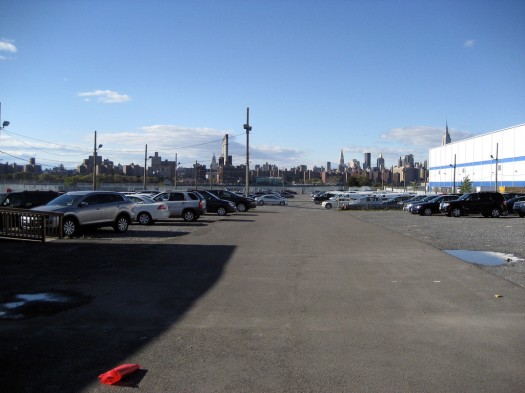
View of East River from N. 9th St. and Kent Ave., Williamsburg. Photo courtesy of Will Fernia.
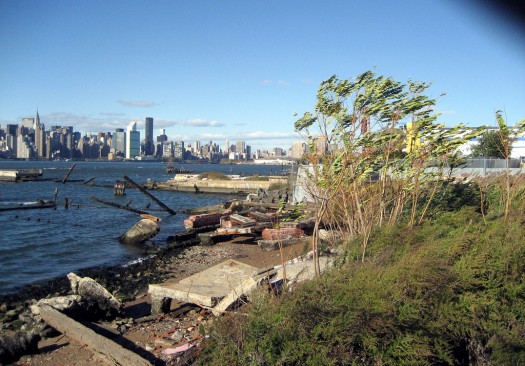
Facing north at river’s edge, East River State Park, Williamsburg. Photo courtesy of Will Fernia.
Calvert Vaux Park
“PlaNYC includes [long-mapped] parks that were never developed or semi-developed. We’ve done community visioning sessions and construction has started at Calvert Vaux Park, near the Coney Island inlet.” – Adrian Benepe
Calvert Vaux Park, originally named Dreier-Offerman Park after a home for unwed mothers that stood on the land, was rededicated in 1998 for the architect Calvert Vaux, whose body was mysteriously found in nearby Gravesend Bay. The 77.98-acre park is bounded by the bay on one side and Shore Parkway on the other, and stretches from Bay 44th to Bay 49th Streets. Completion of phase one of project construction, which includes two synthetic turf soccer fields along with wetlands construction, an entrance garden, and additional trees, is estimated for January 2010. Further phases of construction will bring three baseball fields, six soccer fields, a recreation center, an amphitheater, and a playground along with picnic areas, nature trails, and a bike path.
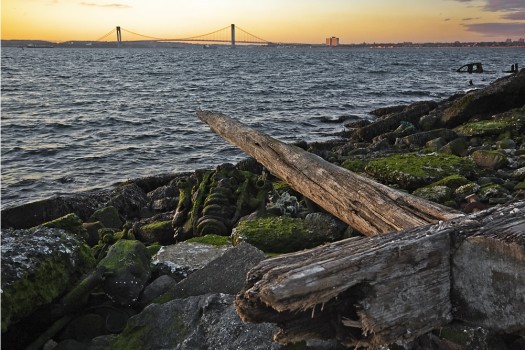
Facing northwest from western tip of Dreier Offerman park, photo courtesy of Timothy Vogel
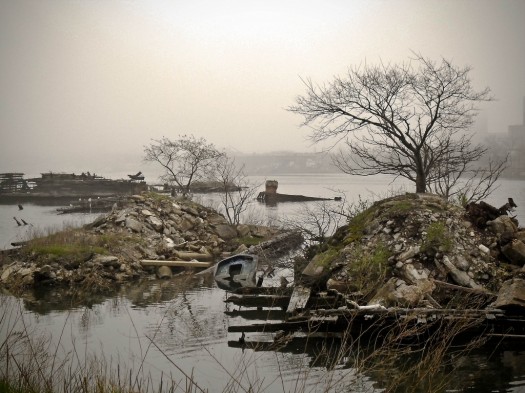
Facing southeast at the southern side of Calvert Vaux Park looking across Coney Island Creek towards the Coney Island parachute jump, photo courtesy of David Hogarty
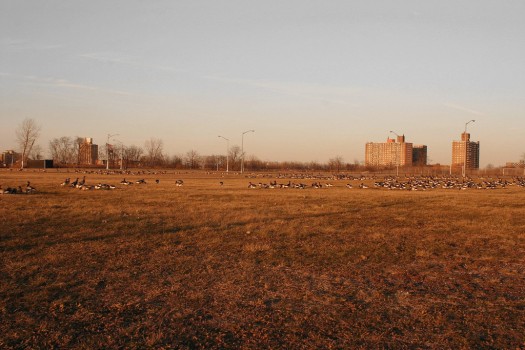
Facing north from the southern corner of the soccer field at Bay 44th St. and Shore Parkway. Photo courtesy of Joe Brown.
Concrete Plant Park
Concrete Plant Park: “The Bronx River, when you get up north, gets quite bucolic. Our idea, with the Bronx River Alliance, is to have a continuous greenway. Concrete Plant Park incorporates old silos like architectural follies and around the bend in Hunts Point is a five-acre park on the lot of a former paint factory.” – Adrian Benepe
Recently opened, this former concrete batch mix plant has been re-established as a 2.7-acre park of salt marshes on the western shore of the Bronx River between Westchester and Bruckner Boulevards, along the Bronx River Greenway. This new amenity for Crotona Park East retains some of the plant’s silos and mixing bins, integrating the industrial relics with new benches and green space facing the waterway.
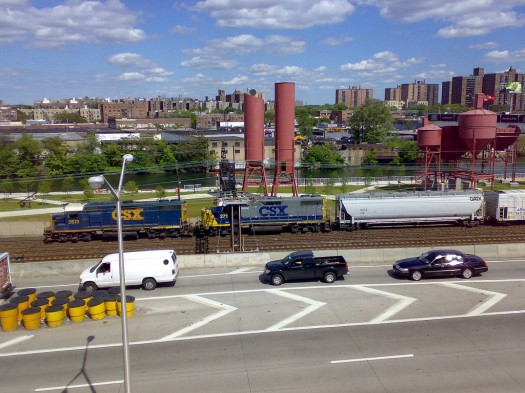
Taken from the elevated 6 Whitlock Ave subway station, facing east. Photo courtesy of Maestro5ive
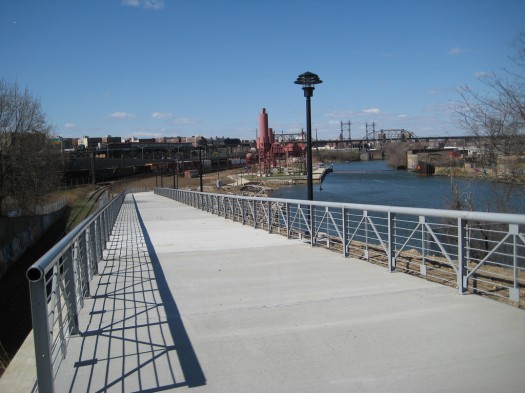
Facing north from the north side of Bruckner Blvd between the railroad and the river, photo courtesy of Jacob Mason
Fresh Kills
Fresh Kills: “It will be open soon, certainly the southernmost section, where they’re building a series of athletic fields. This is a magical moment, the biggest expansion of parks in generations. It’s never a bad idea to acquire land for parkland- they’re not building any more of it.”
“Design ideals for the 19th and 20th Centuries, some are still valid, but people now want to do skate parks and mountain biking and surfing and kayaking…so we throw caution to the wind about lawsuits and put up signs that say ‘play at risk.’ We have an obligation to get kids more exercise, to build facilities for people in wheelchairs…the more we can do to engage kids in one sport or another, the happier they’ll be.” – Adrian Benepe
In an estimated 30 years time, Fresh Kills Park will cover a mammoth 2,200 acres, an area three times the size of Central Park and one big enough for the planned “fives parks in one.” The Confluence will be the center of waterfront and cultural activities, with 20 acres of waterfront land at Creek Landing and 50 acres of athletic, event, social, and artistic program space at The Point. Natural wetlands, meadows, and creeks will cover much of the North, South, East, and West Parks, with additional recreation space, trails, and the natural wetlands and Plans for the North, South, East, and West Parks offer vast tracts of natural settings, with trails, scenic routes, and recreational space throughout. The West Park will be finished last and will include a 9/11 memorial.
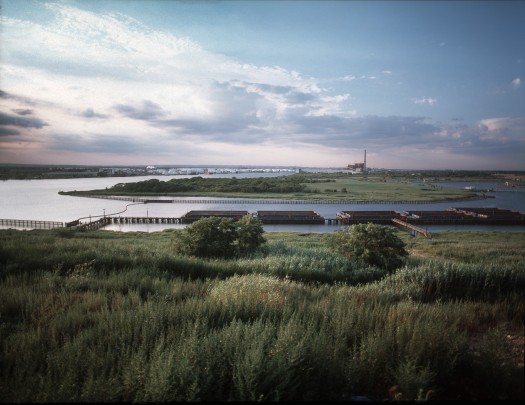
Photo courtesy of Michael Falco
Highland Park/Ridgewood Reservoir
Highland Park/Ridgewood Reservoir: “We have outreach coordinators who do listening sessions and conduct opinion polls. People say: you didn’t listen. Well no, we did listen but we had to make a choice that we hope will satisfy 51% of the people. Everything we do is in the public realm, but you also try to go beyond to incorporate things that people want to do in the 21st Century.” – Adrian Benepe
Situated high on a plateau between Brooklyn and Queens, Highland Park has afforded views of both boroughs and the ocean for over 100 years. The Ridgewood Resevoir was drained a decade ago and a young forest has grown up in its place. Infrastructure for this 50 acre site is currently in the works, which will include perimeter lighting and path restoration. A master plan will follow.
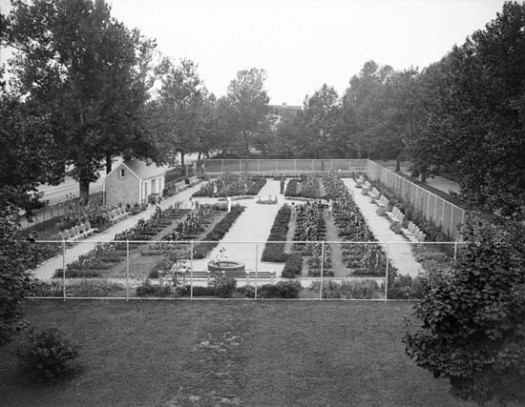
Facing a children’s farm operated from 1907 to the 1960’s by the Board of Education on what is now the site of the Highland Park Children’s Garden by Jamaica Ave and Warwick Street, photo courtesy of NYC Department of Parks and Recreation
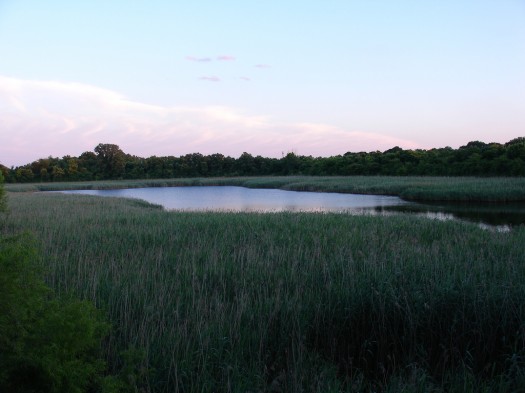
Facing the southwest edge of the central reservoir basin looking northeast, photo courtesy of Greg Bugel
“Unless you get beyond putting in a bench, parks won’t succeed. It’s an old saw that good uses drive out bad. There’s tremendous psychic reward in knowing that even our scut work goes to making people happy. There are very few public services that focus on happiness.” – Adrian Benepe
The views expressed here are those of the authors only and do not reflect the position of The Architectural League of New York.
Comments